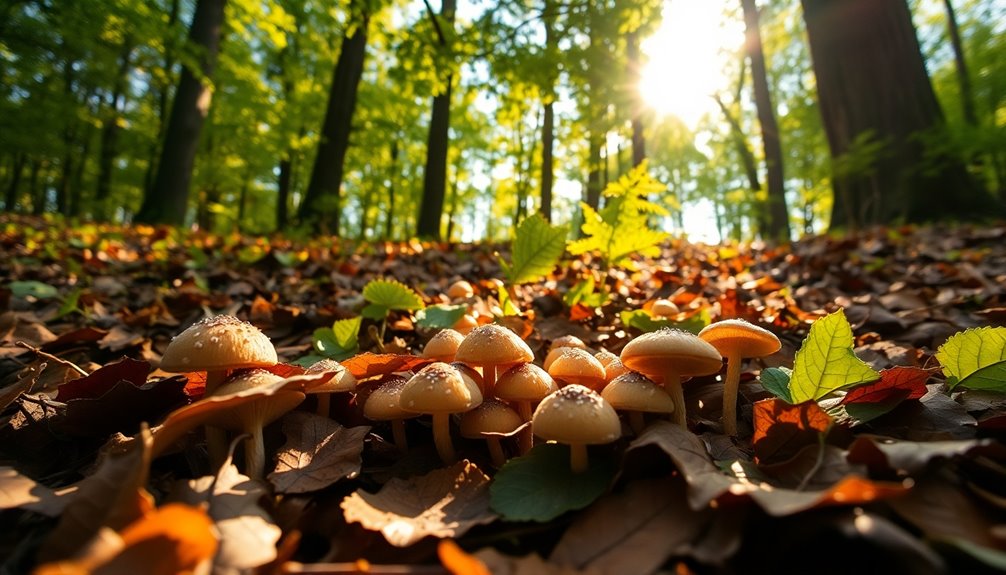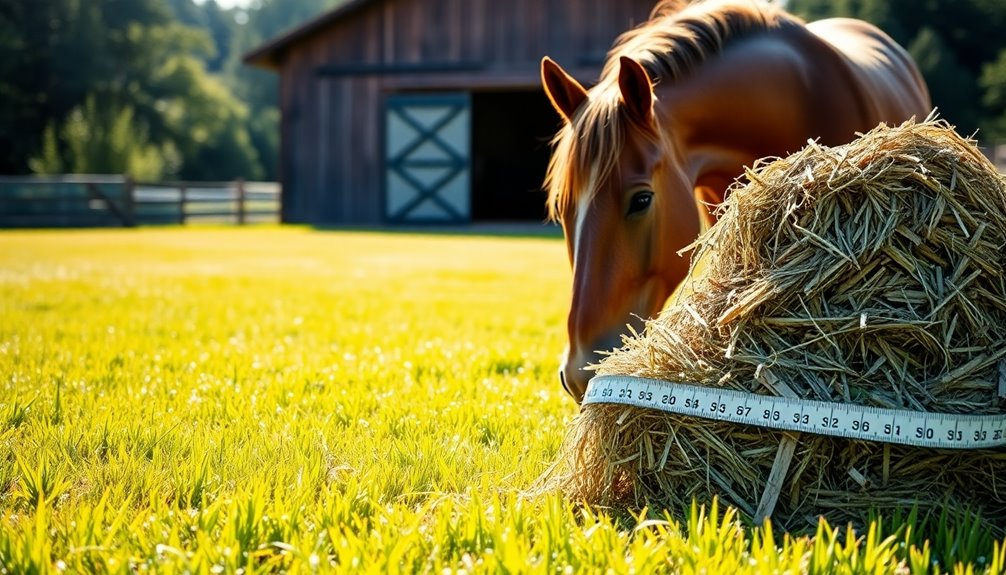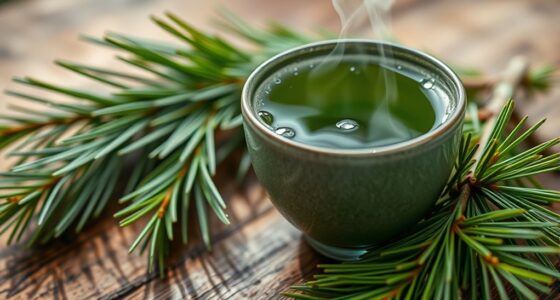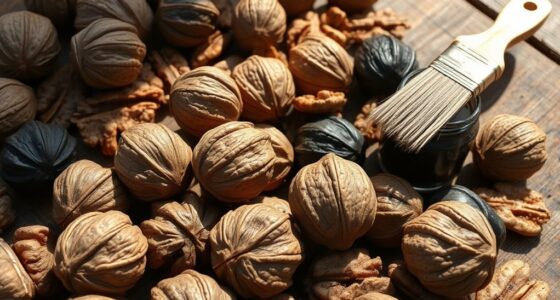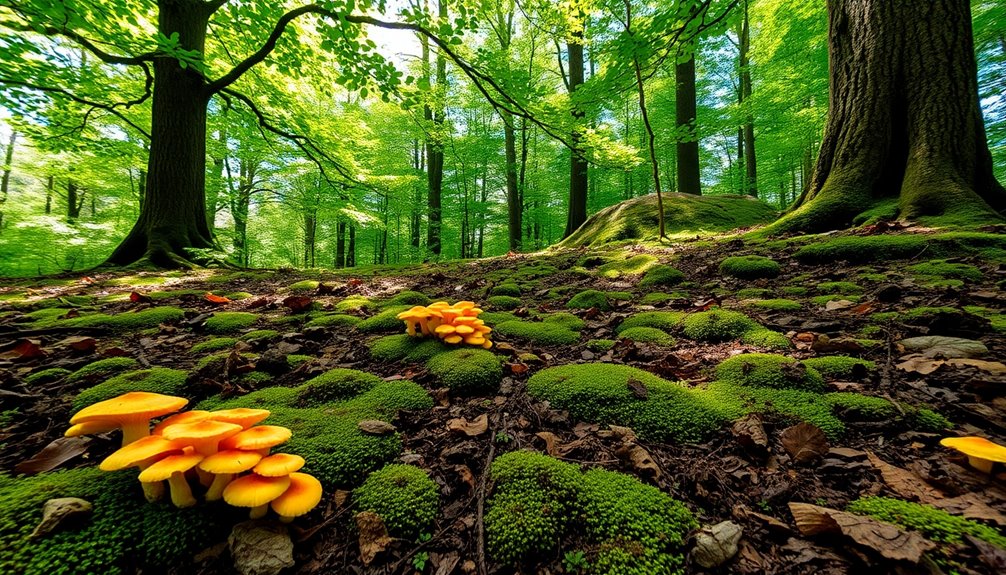You can forage mushrooms in some incredible spots that top chefs keep secret. Look for dying trees, especially elms and ashes, as they promote growth. Southern edges and coastal regions are also prime locations. Check out national forests and parks, where mushrooms thrive in the mossy depths. Be on the lookout for black morels in late April to early May, and summer brings chanterelles. Urban green spaces can surprise you too. Just remember to equip yourself with the right gear and knowledge. Stick around to uncover tips on identifying edible varieties and ensuring a sustainable foraging experience!
Key Takeaways
- Foraging near dying trees, especially elms and ashes, often yields abundant mushrooms prized by top chefs.
- Southern edges of forests provide warmth and moisture, enhancing mushroom growth in secret foraging locations.
- Burn areas from controlled burns enrich soil, making them hotspots for unique mushroom varieties.
- Coastal regions can offer rare mushrooms sought after by culinary experts for their distinct flavors.
- Urban green spaces and local farms may provide unexpected foraging opportunities and guided experiences.
Best Locations for Foraging
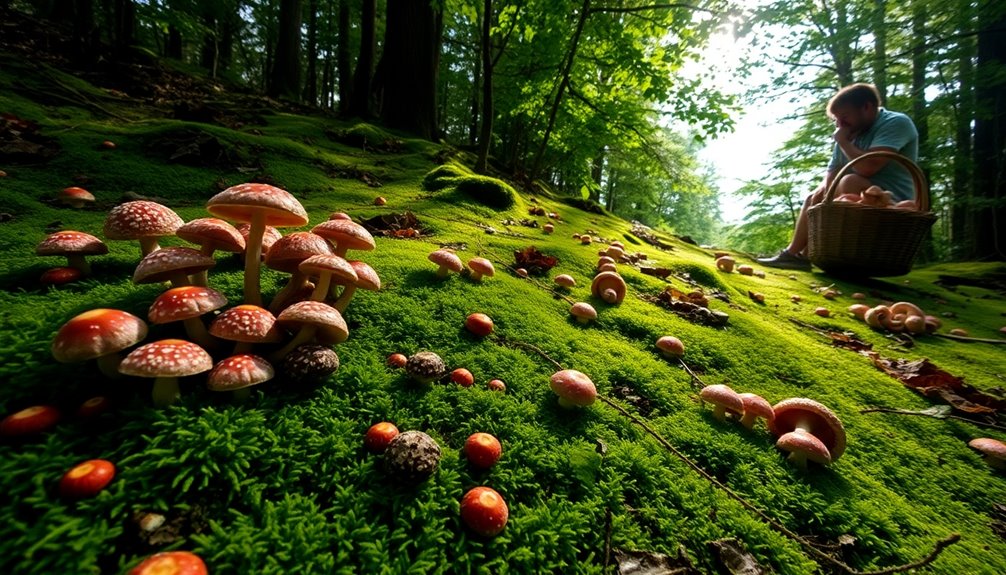
When you're foraging for mushrooms, knowing the best locations can greatly boost your success. One prime spot to evaluate is near dying trees like elms, ashes, and apples.
Focus on the southern edges where warmth and moisture create perfect conditions for wild mushrooms to thrive. Burn areas from controlled burns are also excellent choices, as the enriched soil often yields a higher abundance of mushrooms.
If you're specifically hunting for black morels, look for them in moist nooks and under logs, particularly in late April to early May.
These delicacies tend to pop up when soil temperatures rise above freezing and dandelions bloom. Seasonal timing is critical; seasoned foragers recommend heading out shortly after rainfall to maximize your chances of finding these prized mushrooms.
Seasonal Mushroom Availability
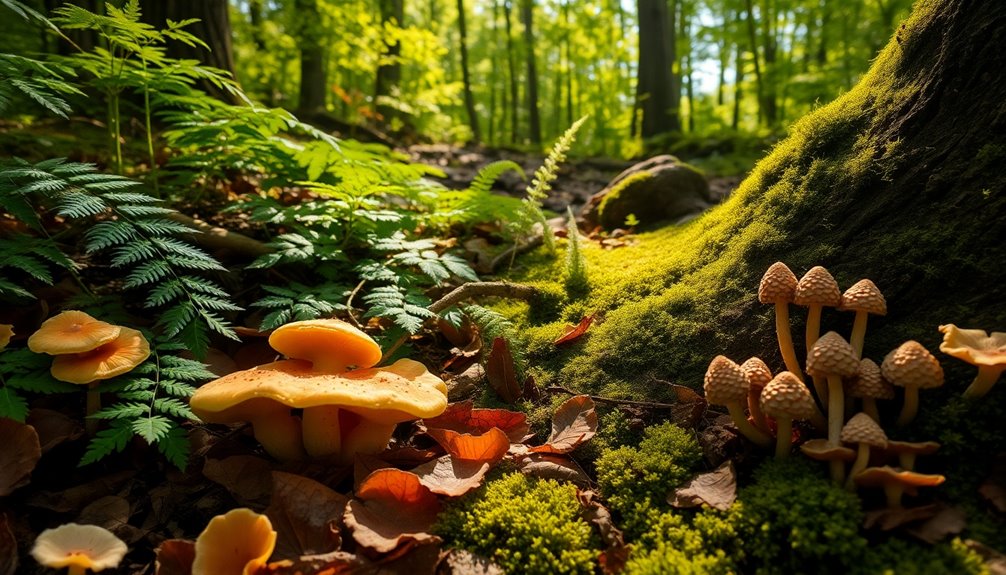
Mushroom availability changes throughout the year, making it vital for foragers to understand seasonal patterns. The foraging season kicks off with black morels, which typically appear in late April to early May. Look for them after seven consecutive days of above-freezing temperatures and sufficient rainfall, as these conditions create an ideal environment for their growth.
As spring shifts to summer, other mushroom species, like chanterelles, become ripe for foraging. You'll find them in moist, wooded areas, where they thrive during the warmer months. Pay attention to environmental indicators, such as the blooming of dandelions, to gauge when soil temperatures are best for mushroom growth.
Knowing the specific seasonal patterns of various mushrooms is essential. For example, false morels and other look-alikes may bloom at different times, which makes careful identification important.
Essential Foraging Gear
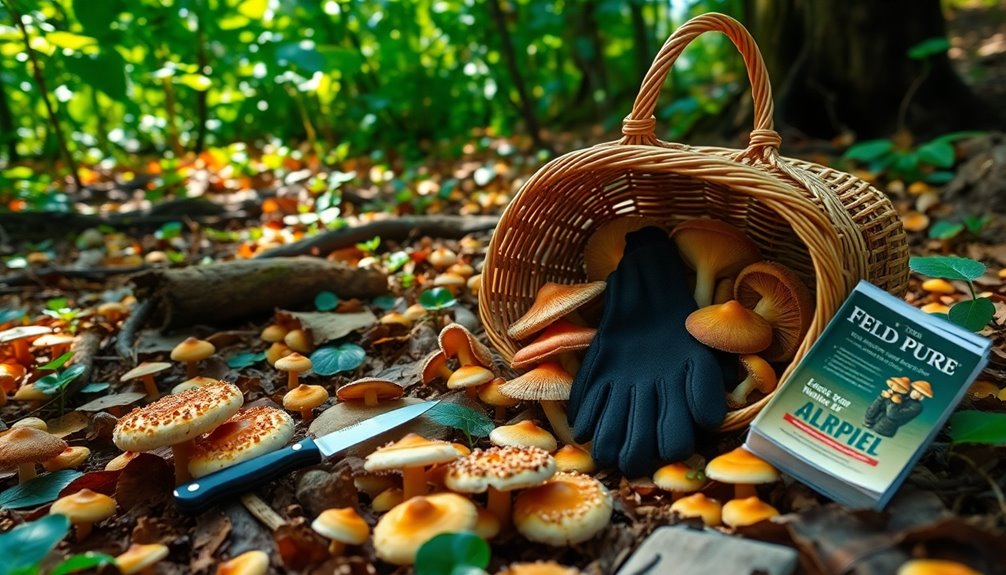
As you prepare for your foraging adventures, having the right gear can make all the difference. Start with durable, nature-colored clothing that helps you navigate rough terrain while blending into your surroundings. Long sleeves and pants are essential to protect yourself from potential hazards like poison ivy and snakes.
Don't forget to apply Bug Blocker sprays to shield against ticks and mosquitoes; pre-treated clothing offers added safety.
For collecting edible mushrooms, a durable basket or a mesh bag is important. These allow for proper air circulation, preventing spoilage as you forage. You'll want your finds to stay fresh until you can cook them up!
Another critical piece of essential foraging gear is a reliable field guide for mushroom identification. This guide will help you distinguish between edible and toxic varieties, ensuring you only bring home the safe ones.
Investing in a good quality guide can be a game-changer in your foraging experience. With the right gear, you'll not only enhance your chances of a successful foraging trip but also enjoy the thrill of discovering delicious edible mushrooms in nature.
Happy foraging!
Safe Foraging Practices
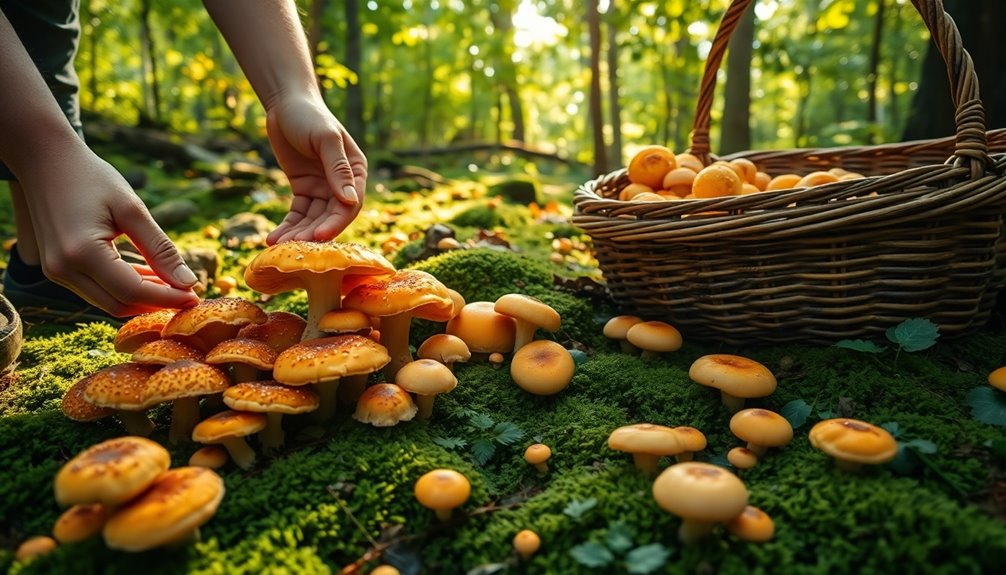
While foraging for mushrooms can be an exciting adventure, it's vital to prioritize safety to avoid potential hazards. Start by consulting experienced mushroom hunters before you head out. They can help guarantee you identify the right varieties and steer clear of toxic ones.
Take your time during your foraging trips; hasty decisions can lead to mistakes in identifying edible mushrooms. Familiarize yourself with the specific characteristics of the mushrooms you're seeking, much like you'd with common vegetables. This knowledge will enhance your identification skills and increase your confidence.
Remember, safe handling is significant—avoid touching or smelling mushrooms unless you're absolutely certain of their safety, as misidentification can result in serious consequences. To further your understanding, consider learning about essential survival skills that can complement your foraging efforts.
Consider joining foraging workshops or community events. These gatherings offer hands-on experience and allow you to learn from knowledgeable foragers in a supportive environment. Surrounding yourself with experts is one of the best safe foraging practices you can adopt.
Identifying Edible Mushrooms
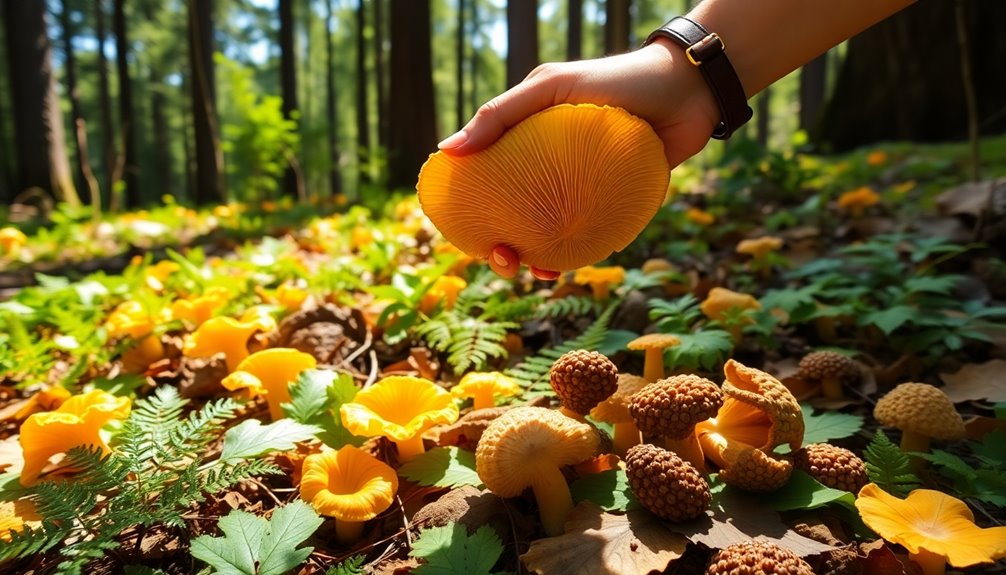
When you're out foraging for mushrooms, it's essential to recognize key identification features like shape, color, and texture.
You'll encounter common edible varieties, but be vigilant about toxic look-alikes that can pose serious risks.
Learning these distinctions not only enhances your foraging experience but also keeps you safe.
Key Identification Features
Identifying edible mushrooms requires keen observation of their unique features. Each type has its own characteristics that can help you distinguish them from toxic varieties. Here are some key identification features to look for:
| Mushroom Type | Key Features | Habitat |
|---|---|---|
| Morels | Honeycomb appearance, hollow stems | Forests near dying trees |
| Chanterelles | Vibrant orange/yellow color, wavy funnel-shaped caps | Moist, wooded areas |
| Pheasant Back | Flat, fan-like shape, distinct markings | Decaying wood, forested areas |
| Environmental Cue | Dandelions blooming can signal morel season | Near specific tree types |
Always trust your instincts, but don't forget to consult reliable field guides or experienced foragers to confirm your identification. Many edible mushrooms have toxic look-alikes that can pose serious health risks. By familiarizing yourself with these key identification features, you'll enhance your foraging skills and enjoy the thrill of discovering what nature has to offer. Happy hunting, and stay safe!
Common Edible Varieties
Foraging for edible mushrooms can be an exciting adventure, especially when you know what to look for. Among the most common edible mushrooms, chanterelles, morels, and lobster mushrooms stand out due to their unique features.
Chanterelles are easily recognizable with their trumpet-like shape and vibrant yellow or orange color. You'll typically find them in moist, wooded areas during the summer months.
Morels, on the other hand, have a distinctive honeycomb appearance and hollow stems. They're often located near dying trees, making them a popular springtime find.
Lobster mushrooms add a splash of color with their bright red-orange hue and possess a seafood-like aroma, making them a delightful addition to any dish. You can usually harvest these in coniferous forests from late summer to early fall.
While these common edible mushrooms are delicious, proper identification is essential. Many edible varieties have toxic look-alikes, so it's wise to consult experienced foragers or reliable field guides before you start collecting.
With practice and caution, you'll soon enjoy the thrill of foraging and cooking with your own wild finds!
Toxic Look-Alikes Awareness
While exploring the world of edible mushrooms can be thrilling, it's vital to remain vigilant about the potential dangers posed by toxic look-alikes. As a mushroom hunter, you need to recognize that many edible varieties have counterparts that can be harmful. Misidentification can lead to serious consequences, so here's what to watch for:
- Chanterelles vs. Jack-o'-Lanterns: The tasty chanterelle can be confused with the toxic jack-o'-lantern mushroom, which even glows faintly in the dark. Listening to classical music while foraging can enhance your focus and concentration during this activity, reducing the chances of misidentification.
- Morels vs. False Morels: True morels have a honeycomb appearance but can be mistaken for false morels, which can cause gastrointestinal distress. Additionally, knowing the importance of carrier oils when preparing foraging-based remedies can enhance your safety. It is crucial to recognize that certain mushrooms may pose a risk of emotional dysregulation in individuals with specific mental health conditions, which can impact their foraging experience.
- Identifying Features: Pay attention to cap shape, stem hollowness, and habitat. These details are vital in distinguishing between edible and toxic varieties. Additionally, knowing how aromatherapy can reduce anxiety can help maintain a calm mindset while foraging. Engaging in mindful practices, such as aromatherapy techniques, can enhance your focus during the foraging process.
For anyone new to mushroom hunting, it's important to consult experienced foragers or reliable field guides. This knowledge can make a significant difference in your foraging experience, helping you enjoy the bounty of nature safely.
Stay informed, and happy hunting!
Culinary Uses of Foraged Mushrooms
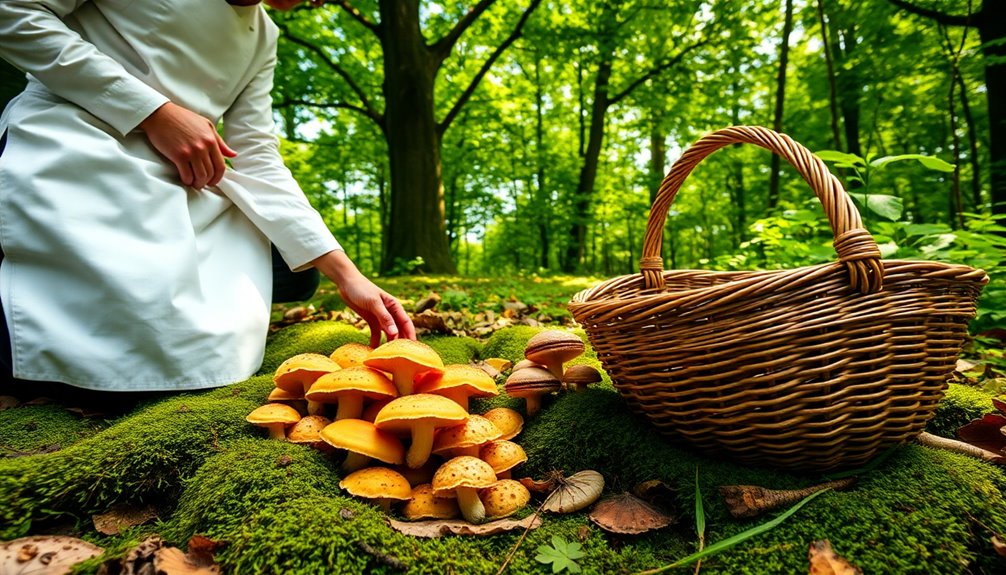
Foraged mushrooms bring unique flavor profiles that can elevate your culinary creations. By incorporating seasonal varieties like matsutake and morels, you can craft gourmet dishes that celebrate freshness and innovation. Additionally, foraged mushrooms pair exceptionally well with fermented vegetable plates, enhancing the overall depth of flavor in your meals. These mushrooms not only enhance your meals but also reflect rich culinary traditions, making them a valuable addition to any kitchen. Furthermore, the use of indigenous ingredients in Brazilian cuisine showcases the importance of local foraging in creating authentic flavors. Additionally, these foraged ingredients can be paired with herbal infusions, such as flower teas, to create a harmonious dining experience.
Unique Flavor Profiles
The unique flavor profiles of wild mushrooms can transform your culinary creations, offering a depth that cultivated varieties simply can't match. For instance, morel mushrooms bring a rich, earthy taste that elevates any dish, while other foraged varieties like matsutake and chanterelles add a delicate sweetness. These flavors not only enhance your cooking but also connect you to the local landscape. Additionally, their appeal can attract a wider customer base who appreciate gourmet ingredients that highlight local foraging. Foraging for mushrooms in the wild reflects a time-honored tradition, showcasing the historical significance of foraging baskets in various cultures. Furthermore, understanding risk management strategies can help chefs make informed choices about sourcing and utilizing these ingredients effectively.
Here are three standout wild mushrooms to contemplate:
- Morel Mushrooms: Their nutty flavor pairs beautifully with creamy sauces and risottos, making them a favorite among chefs.
- Porcini: Known for their robust, earthy notes, porcinis work wonders in pasta dishes and hearty stews.
- Chanterelles: With their fruity, peppery taste, chanterelles shine in sautéed dishes or as a garnish, adding a vibrant touch.
Incorporating these wild mushrooms into your menu can give you a competitive edge, as their depth of flavor and unique textures can't be replicated by cultivated varieties. Additionally, foraging for mushrooms in locations like state parks and nature reserves can yield a variety of edible fungi that enhance your culinary offerings.
Seasonal Culinary Creations
Incorporating seasonal foraged mushrooms into your dishes can elevate your culinary creations like never before. Foraged varieties, like matsutake and chanterelles, offer unique flavors and textures that surpass cultivated options. These wild, edible mushrooms can inspire you to craft innovative recipes that leave a lasting impression.
As you plan your menu, consider the seasonal availability of these mushrooms. Chefs often highlight freshly foraged ingredients to create memorable dining experiences. You can sauté, grill, or even incorporate them into soups and tarts, enhancing both the taste and nutritional value of your meals.
Consider featuring wild mushrooms in signature dishes, such as a Cajun mushroom tartar or savory salmon cakes. These dishes not only showcase local ingredients but also tell a story of your connection to nature.
As you forage, you'll discover the joy of sourcing your own ingredients, which adds a personal touch to your culinary endeavors. Incorporating these wild, edible mushrooms into your cooking won't only impress your guests but will also deepen your appreciation for the natural world, enriching your overall culinary experience.
Gourmet Dish Enhancements
Many chefs seek out unique foraged mushrooms to enhance gourmet dishes, knowing these wild varieties can transform a meal.
By incorporating mushrooms like matsutake and chanterelles, you can elevate your culinary creations with distinctive flavors and textures. These mushrooms not only provide a taste explosion but also boost nutritional value, packed with essential vitamins and minerals.
When planning your menu or dishes, consider these three ways to incorporate foraged mushrooms:
- Sautéed as a Side: Quickly sauté wild mushrooms with garlic and herbs for a flavorful side dish that complements meats or grains perfectly.
- In Soups and Sauces: Add foraged mushrooms to soups or sauces, infusing them with rich umami flavors that elevate any broth or base.
- As a Garnish: Use thinly sliced or fried mushrooms as a garnish for your plates, adding visual appeal and a burst of flavor.
Community Foraging Resources
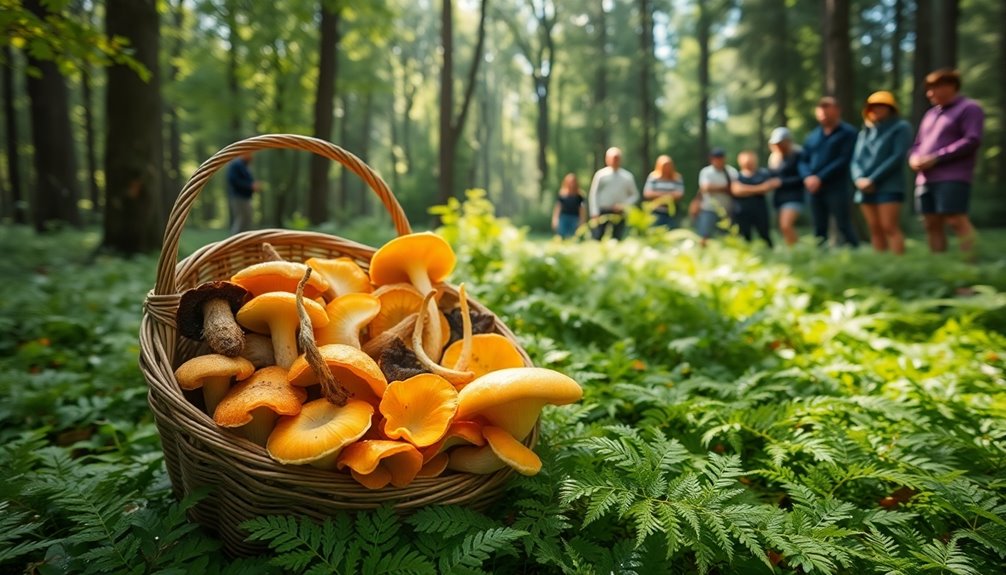
Foraging for mushrooms can be an enriching experience, especially when you tap into community resources designed to enhance your skills and knowledge. Local mycological societies, like the Central Texas Mycological Society, offer workshops and events that teach you safe foraging practices and mushroom identification. These gatherings are invaluable for beginners and seasoned foragers alike.
You can also participate in classes, such as the upcoming session in San Antonio led by instructor Cody Masters. This class covers mushroom cultivation techniques and is even accessible via live streaming, making it easy to join from anywhere.
Many communities organize group foraging outings, where you can learn from experienced foragers while sharing insights about safe harvesting and local regulations. These outings foster a supportive environment, allowing you to connect with others who share your passion for wild foods.
Moreover, educational initiatives by local organizations emphasize sustainable foraging practices, ensuring you understand how to protect ecosystems while enjoying your mushroom hunts.
Don't forget to check online platforms and social media groups dedicated to foraging, where you can share tips, locations, and experiences with fellow enthusiasts.
Sustainable Foraging Tips
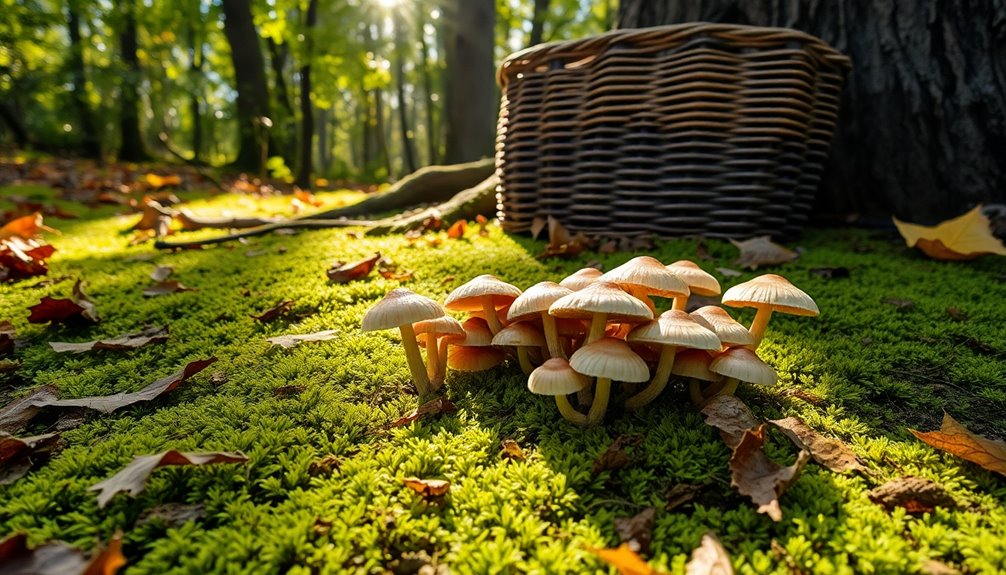
When you head out into the woods for mushroom hunting, keeping sustainability in mind is crucial for preserving these delicate ecosystems.
Foraging responsibly guarantees that future generations can enjoy the same bounty. Here are some tips to help you forage sustainably:
- Take Only What You Need: Always leave some mushrooms behind. This practice guarantees the species can continue to thrive and maintain a healthy habitat.
- Know the Rules: Familiarize yourself with local regulations regarding mushroom harvesting. Some areas have restrictions to protect ecosystems, so it's critical to stay informed.
- Educate Yourself: Learn to identify safe versus toxic mushrooms. Attend workshops or consult guidebooks to minimize risks during your foraging adventures.
Frequently Asked Questions
Where Is the Best Place to Forage Mushrooms?
The best places to forage mushrooms are near dying or dead trees, especially elms, ash, and apple trees.
You'll find that the southern edges of these trees are particularly good due to their warmth and moisture.
After controlled burns, check those areas, too; mushrooms love the nutrient-rich soil.
Finally, explore moist, wooded spots during spring, especially after rainfall.
Just remember, always identify what you find carefully, as some can be toxic.
Where Are the Best Mushroom Foraging Spots?
When you're searching for the best mushroom foraging spots, look near dying trees, explore burn areas, and check the southern edges of woods.
You'll find morels thriving in moist nooks and under logs, waiting for you to discover them.
Keep an eye on seasonal patterns, too; spring after rainfall is prime time.
With patience and keen observation, you'll uncover nature's hidden treasures, bringing home delicious mushrooms for your next meal.
Where Can I Find Mysterious Mushrooms?
If you're looking for mysterious mushrooms, head to moist, wooded areas, especially near dying trees like elms and ashes.
These spots create an ideal environment for growth. After a rainfall in spring, you'll find them thriving.
Check the southern edges of trees, as they retain warmth and moisture.
Always consult local foraging guides or experienced hunters to verify you're identifying mushrooms correctly, avoiding any toxic varieties that might closely resemble the edible ones.
What Month Is Best for Mushroom Hunting?
When the earth awakens in spring, it's your cue to seek mushrooms. The best month for mushroom hunting usually falls in late April to early May when morels start to emerge.
You'll notice that as temperatures warm and rain falls, black morels often pop up first. Keep an eye on plants like dandelions; they'll hint at the soil's readiness.
Conclusion
So, is it true that top chefs guard their secret foraging spots? While they might keep their favorite locations under wraps, the thrill of discovering your own hidden gem is unmatched. By exploring local parks, forests, and even urban areas, you can find incredible mushrooms. Just remember to forage responsibly and share your discoveries with others. Who knows? You might even inspire a new culinary trend! Embrace the adventure and get out there—your next gourmet dish is waiting!

